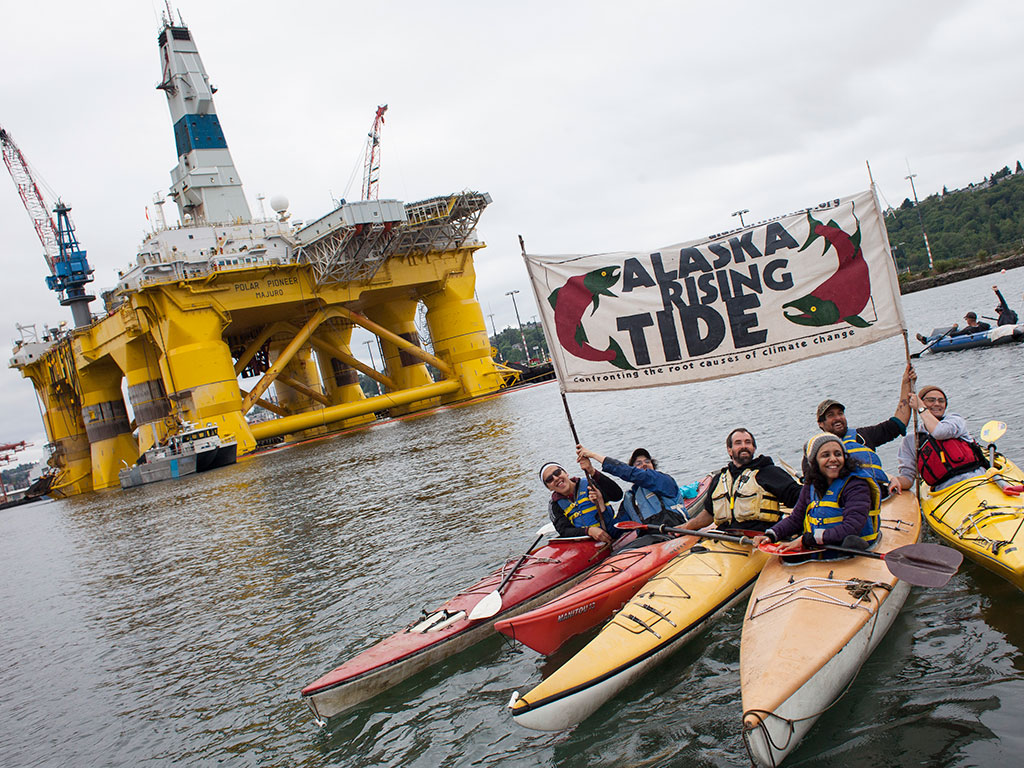Mixed fortunes for Arctic oil
The hunt for Arctic oil has taken a battering this year, although the outlook isn’t all negative

Activists were angry about Shell's plans to drill in the Arctic. The oil giant has since called time on this endeavour
The great Arctic oil drive suffered a major setback this year when Shell called time on its Alaskan oil endeavour. Speaking in September about the decision, sources there said the reserves were “not sufficient to warrant further exploration,” despite the company having spent $7bn on offshore developments in the Chukchi and Beaufort Sea. Essentially, the risks – financial or otherwise – associated with the project were too great for Shell to stomach.
“We hope this will provide a reality check to other companies considering the unpredictable proposition of Arctic drilling, and that investors will transition their funds instead towards low-carbon solutions,” wrote Alexander Shestakov, Director of WWF’s Global Arctic Programme. And as much as environmental groups looked on the announcement as proof producers were bowing to outside pressures, the reality was not so much the case.
While Shell’s failed approach work has made headlines around the globe, much less has been said about the many more successful projects
Rather than a death nail for Arctic oil, the Shell backslide is little more than a minor setback for a major industry.
According to a Eurasia Group report for the Wilson Centre, the Arctic is host to an estimated 1,670 trillion cubic feet of natural gas and 90 billion barrels of oil, or 30 percent of the world’s undiscovered gas and 13 percent of the oil. As much of a setback as Shell’s Burger J well was, it’s by no means enough to dampen the industry’s enthusiasm for what is the most underutilised pool of non-renewable resources left on the planet.
The brighter side of Arctic oil
While Shell’s failed approach work has made headlines around the globe, much less has been said about the many more successful projects. Hilcorp for example has plans to build a gravel island to act as a platform for five or more extraction wells. Located six or so miles off the coast of the Beaufort Sea, the 23-acre island would create a platform from which the company could produce 70,000 barrels of oil a day, or 80 million to 150 million barrels over a 15- to 20-year timeframe.
The proposal is still awaiting approval and will likely struggle to get off the ground before 2017. However, the plan is proof that there is opportunity enough to keep major players in the hunt.
More impressive than Hilcorp’s island expansion is the situation in Norway, where the government has ambitions to set in motion further Arctic drilling plans by the year 2017. “New acreage is a cornerstone for long-term activity,” said Norway’s Minister of Petroleum and Energy, Tord Lien, speaking to Marketwatch. “It’s a good sign for the future petroleum activity in the high north that a broad selection of companies compete for new acreage in the Barents Sea.”
Participants in the latest funding round, according to Lien, included major names BP, Shell and Statoil, together with a string of lesser-known names – 26 in all. And while the territory is a relatively mature one, the emergence of the Norwegian Barents Sea as a hot new prospect has seen a string of new participants register an interest. The Goliat drilling platform, to name another, is the world’s largest offshore rig and the $8bn joint venture between Eni and Statoil is on course to draw 174 million barrels of Arctic oil out of the Barents.
True, the market for Arctic oil has suffered a setback in recent times, though observers would be wrong to assume producers are giving up on the opportunity. The Shell withdrawal has been labelled a major turning point for environmentalists, though critics mustn’t overlook the many more successful projects around the globe.
For more on the subject of Arctic oil, see this World Finance article. For a more comprehensive analysis of Arctic oil’s mixed fortunes, keep an eye out for the forthcoming issue of the magazine.













